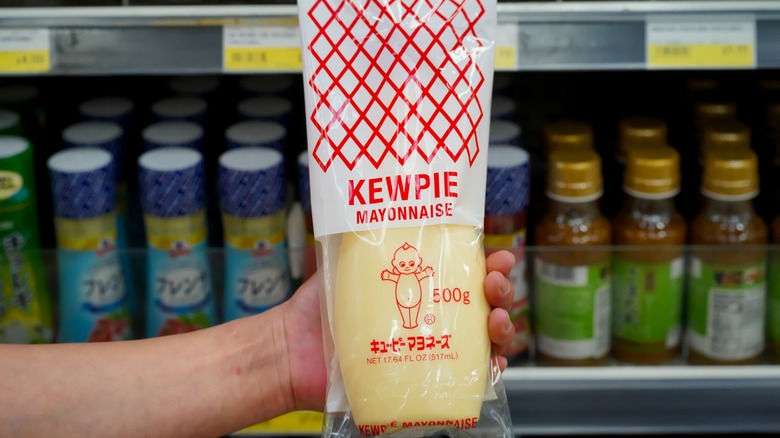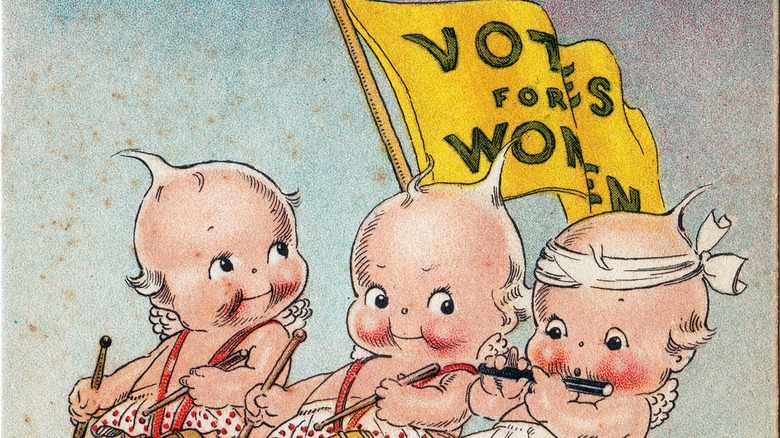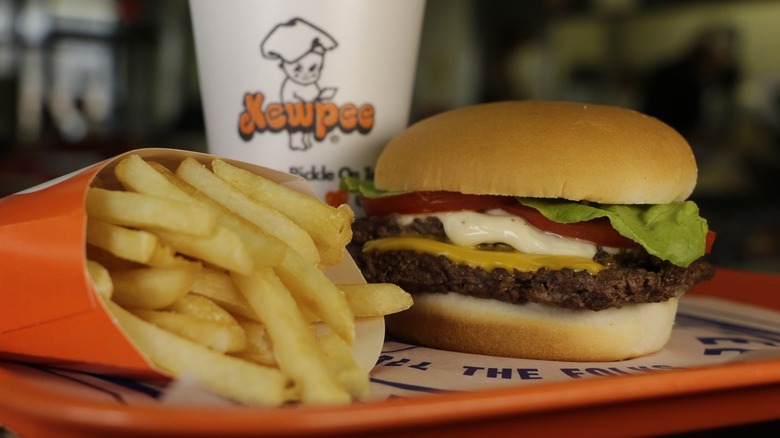The Ohio Burger Chain That Shares A Mascot With Kewpie Mayo
The best thing about Kewpie Mayonnaise is its rich umami flavor, which comes from egg yolks — unlike most American mayonnaise brands, which use whole eggs — a vinegar blend, plus a dash of MSG for good measure. Taste aside, Kewpie wouldn't be as iconic without its mascot, whose adorable likeness graces each bottle's plastic sleeve.
Despite its Japanese origins, Kewpie shares its signet (and its name) with Kewpee Hamburgers, the same Midwestern burger chain whose square patties and malted milkshakes inspired the creation of Wendy's. How did a tiny cherub come to represent two very different brands? The same reason why Frito Lay likes to feature basketball players on its chip bags: Beloved pop culture figures sell products.
While Kewpie dolls (named for their resemblance to baby cupids) may not be a household name anymore, they were all the rage in the 1920s when Kewpie Mayonnaise and Kewpee Hamburgers both hit the scene.
From subversive cartoon to food mascots
Before kewpies were food-brand mascots, they appeared as cartoons in publications like Ladies' Home Journal and Good Housekeeping in the early 1900s. In her autobiography, kewpie creator Rosie O'Neill described a kewpie as "a benevolent elf who did good deeds in a funny way."
The subversive cartoons became such a hit that the toy maker George Borgfeldt & Company approached O'Neill in 1912 with a pitch for a doll version. Soon, kewpies were available in porcelain figurines that made for coveted carnival prizes.
At the peak of the kewpie craze, brands like Jell-O and Kellogg's Corn Flakes seized their popularity by featuring them on their packaging. Kewpee Hamburgers and the Kewpie Corporation (formerly Shokuhin Kogyo Co., Ltd.) and Kewpee Hamburgers followed suit — for no other reason than the public's love of Kewpie dolls.
The first Kewpee Hamburger location opened in Flint, Michigan, in 1918, and a decade later, it expanded to Lima, Ohio, where there are currently three locations. According to Gary Flinn, the author of "Kewpee Hamburgers: A Mity Nice History," Rosie O'Neill was "generous with her friends" and never copyrighted the Kewpie name, hence its eclectic use as a mascot. However, Flinn noted that O'Neill was adamant about one thing: That the Kewpie figure on Kewpee Hamburgers' wrappers and merchandise didn't have wings. Perhaps a wingless cupid was O'Neill's way of making the doll more accessible to non-denominational customers. After all, "We cater to all the folks" was Kewpee Hamburgers' original slogan.
Discovering Kewpies
While traveling to the U.S. with the Japan Department of Agriculture and Commerce with the company that would eventually become Kewpie Corporation, Toichiro Nakashima discovered three things that he took back with him to Japan: Orange marmalade, mayonnaise, and kewpie dolls. When he returned home and helped launch the mayo in 1925, the wildly popular Kewpie character was a natural choice for a mascot.
Meanwhile, Kewpee Hamburgers, which is among America's oldest burger joints, boasted a kewpie mascot two years before Kewpie Mayonnaise jumped on the bandwagon. There are only three locations left of the once-sprawling chain, all located in Lima, Ohio. If you're torn between which outpost to visit, opt for the one downtown to see the retro kewpie doll that hovers over its entrance, spreading goodwill and sating appetites. Kewpie dolls may be a thing of the past, but Kewpie Mayonnaise and Kewpee Hamburger carry on the legacy of the cheerful cherubs.


